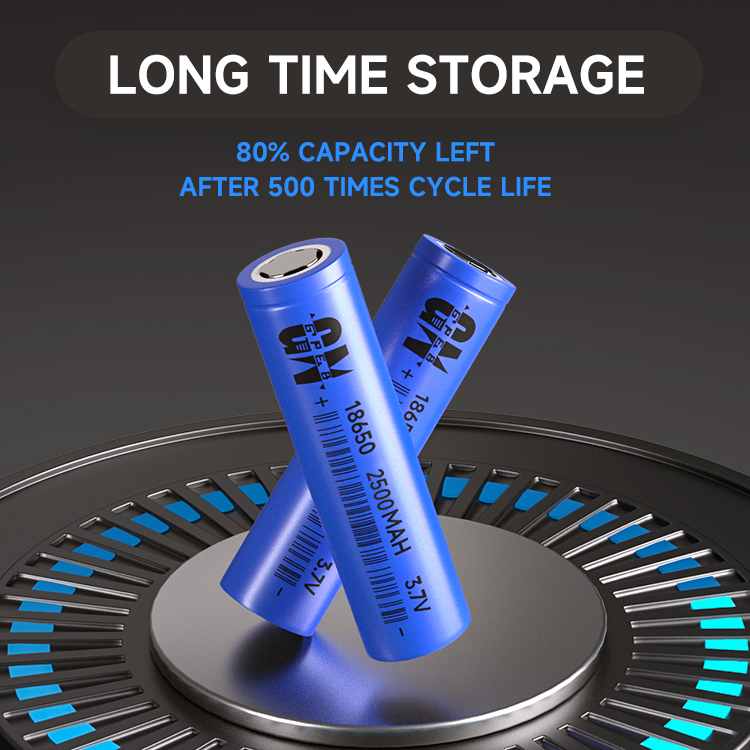
1. High nickel content
Low temperature and high energy density 18650 3350mAh-40℃ 0.5C discharge
capacity ≥60%
Charging temperature: 0~45℃ Discharge temperature: -40~+55℃ Specific
energy: 240Wh/kg -40℃ Discharge capacity retention rate: 0.5C Discharge capacity
≥ 60%
It is not difficult to understand this. The specific capacity of ternary
materials increases with the increase of Ni content. In order to obtain higher
capacity, increasing the Ni content is the most effective method. At present,
the technology of NCM811 is relatively mature, and the ratio of materials The
capacity can reach more than 190mAh/g. In order to further improve the specific
capacity of the material, the majority of material manufacturers are developing
ternary system materials with Ni content reaching 0.9 or even higher.
2.Single crystal material
Although high-nickel ternary materials have high capacity, the crystal
structure stability of high-nickel ternary materials is poor. Especially under
high voltage, oxygen evolution reaction is prone to occur, causing surface phase
change of the material. Single crystallization is the solution to this problem.
An effective solution to the problem, single crystal materials can effectively
improve the structural stability of the material itself. At the same time, the
smaller specific surface area can also reduce the occurrence of interface side
reactions, thereby significantly improving the cycle performance of the
material.
Countries such as Europe and the United States are currently at a
disadvantage in lithium-ion battery technology, and there is no hope of catching
up in a short time. Therefore, Europe and the United States are targeting the
next generation of lithium-ion battery technology. All-solid-state batteries are
currently the most researched and recognized next-generation lithium-ion battery
technology. Solid-state electrolytes replace traditional liquid organic
electrolytes and can solve the problem of poor safety of traditional lithium-ion
batteries to a certain extent. At present, solid electrolytes can basically be
divided into three categories:
1.Polymer electrolyte
Polymer electrolytes represented by PEO are the earliest solid electrolytes
developed by people. Polymer electrolytes have good plasticity, so it is easier
to deal with the interface contact problems existing in solid electrolytes, so
they have also received the most attention. However, the polymer electrolyte
itself is at room temperature. The conductivity is low and it generally needs to
be heated to above 60°C for use. At the same time, the polymer electrolyte has
poor oxidation resistance, so it cannot match high-voltage cathode materials.
This has also led to great restrictions on the use of polymer electrolytes.
2. Inorganic oxide electrolyte
Inorganic oxide electrolytes, such as LLZO and other materials, have better
room temperature conductivity than traditional polymer electrolytes. At the same
time, oxide electrolytes have better stability at high voltages, so they have
also received widespread attention. However, oxidation The interface contact
between the electrolyte and the electrode is poor. In order to solve the
interface contact problem, high-temperature sintering is a common method, but
this may cause the analysis of the cathode material and also greatly increases
the complexity of the process. At the same time, the oxide solid electrolyte is
expensive The price also limits its large-scale use.
3. Sulfide electrolyte
The outstanding feature of sulfide electrolytes is their high conductivity.
The conductivity at room temperature is the same as that of traditional
carbonate electrolytes. Therefore, sulfide solid electrolytes also have high
hopes. However, sulfide electrolytes also suffer from a common problem of solid
electrolytes - the interface. Poor contact, batteries using sulfide electrolytes
often have to exert huge pressure to work properly. At the same time, sulfide
electrolytes will break down when exposed to moisture in the air and release H2S
toxic gases. Therefore, sulfide solid electrolytes have extremely high
requirements regarding the processing environment. High, which also leads to an
increase in costs.
After years of technological development, the power lithium-ion battery
market has surpassed 3C consumer electronics lithium-ion batteries. Ternary
materials have also replaced traditional LCO materials and become the mainstream
cathode materials for power lithium-ion batteries. Higher energy density is the
future. The important direction for the development of power lithium-ion
batteries. In order to meet this goal, high nickel and single crystallization
are important trends in the development of cathode materials in the future. In
terms of next-generation battery technology, solid-state batteries are currently
the most mature technology. Overall Considering the good production performance
and low price of polymer electrolytes, they are a promising solid electrolyte in
the future.
Read recommendations:
R14
Misunderstanding of battery usage.3.7v 18650 battery pack
What are the advantages of lithium iron phosphate battery
26650 battery direct sales
902030 polymer battery












































 360° FACTORY VR TOUR
360° FACTORY VR TOUR
 Whatsapp
Whatsapp
 Tel
Tel Email
Email TOP
TOP